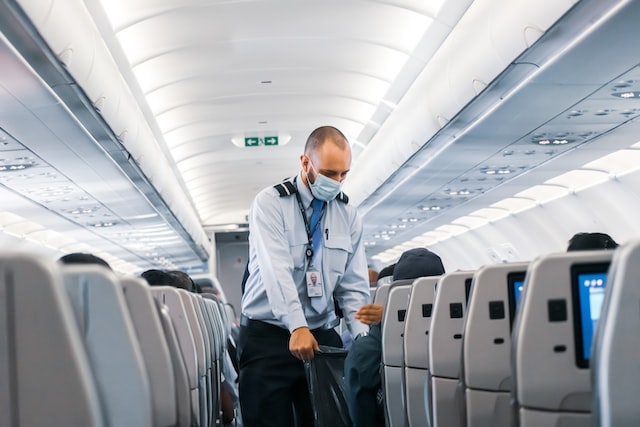Table of Contents
Airplane accidents do not necessarily due to plane crashes. Airplane accidents can happen at any point between takeoff and landing- a plane can land safely, but the passengers can still suffer various injuries. It is, therefore, important to know how to attend to medical emergencies due to these accidents if you are a flight attendant or crew member. You can only do this if you have basic first aid knowledge and skills.
In-flight accidents are frequent on small aircraft such as helicopters, charter flights, and corporate jets though they also occur on commercial airlines. Many things can cause in-flight accidents, including turbulence, luggage, food services, and adverse medical conditions.
Fortunately, aviation laws give you the right to file lawsuits against employees, airlines, or even airplane manufacturers for the injuries caused. Putting this one aside, let’s look at the common causes of flight injuries.
Turbulence
Turbulence is a natural calamity that may be difficult to avoid. The majority of in-flight passenger injuries are caused by turbulence. Changes in altitude can shake or cause a sudden drop in the plane. This unpredicted turbulence can throw passengers from their seats to the hard surfaces of the cabin, trip or fall on the way to the restroom, or cause them to hit their heads against windows. These can cause broken bones, twisted ankles, bruises, or scrapes.
Flight attendants need to have first aid training so that they can administer first aid when these accidents occur as the victims wait for the plane to land so they get real medical operations.
Luggage
Sometimes, the luggage in the overhead baggage compartment does fall, causing thousands of injuries yearly. The number of injuries caused by falling luggage are increasing due to the charging of this luggage by the airlines.
These accidents occur when there is a sudden spring opening of the overhead luggage compartments during the flight. This can be caused by turbulence, overloading of the compartment, faulty latches, or failure to store the luggage safely in the cabin crew.
When this happens, the luggage may fall on the passengers sitting underneath the compartment door, causing facial lacerations, broken noses, or even concussions when the luggage is heavy.
Adverse medical conditions
Some passengers may have chronic conditions like a heart attack or stroke that may be triggered while on a flight. When this happens, the flight attendants should perform cardiopulmonary resuscitation to double the chances of the victim’s survival. The pilot should also land the plane before the final destination for the victim to get medical attention.
While preparing to land, the pilot should communicate the in-flight emergencies to the ground staff to prepare them to get the necessary medical equipment ready.
Food service
Food services are necessary for a long flight, but they pose injury risks. For example, if you carry a food or drink cart and don’t secure it properly, it may roll forward and strike the arms or legs of a fellow passenger sitting on the aisle.
Due to long hours of flying and poor preservation, the food may go bad and cause food poisoning, which can lead to adverse reactions in the body that may require a medical emergency.
Luckily, if you have a flight attendant with first aid knowledge, they can help.
Conclusion
Aviation accidents are common and are not only caused by plane crashes. Things like turbulence, falling luggage, adverse medical conditions, and food services can also cause in-flight accidents.
Because these accidents are common, it is essential for flight attendants, pilots, and cabin crews to have basic first aid and CPR certifications.







